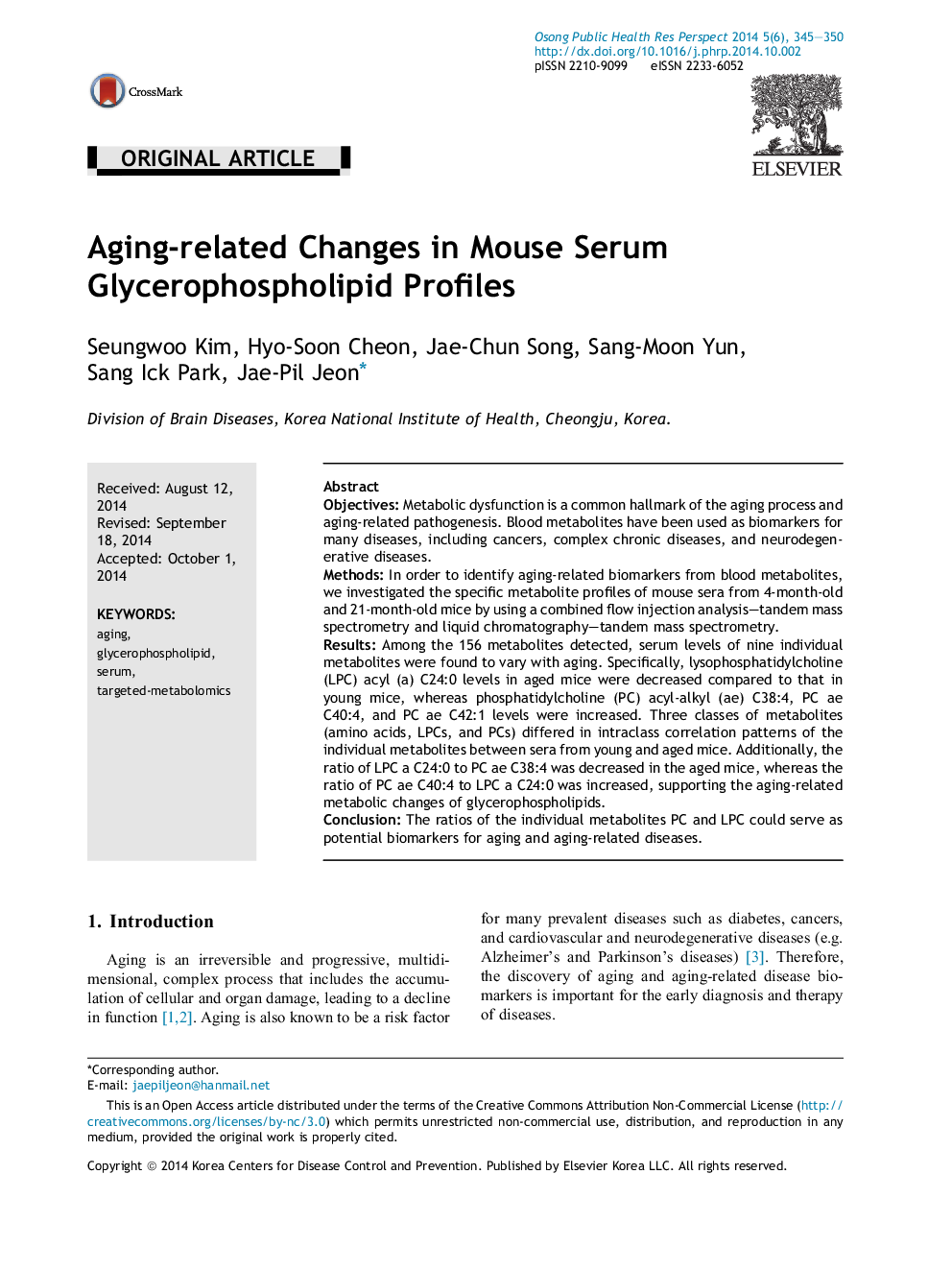| Article ID | Journal | Published Year | Pages | File Type |
|---|---|---|---|---|
| 4202016 | Osong Public Health and Research Perspectives | 2014 | 6 Pages |
ObjectivesMetabolic dysfunction is a common hallmark of the aging process and aging-related pathogenesis. Blood metabolites have been used as biomarkers for many diseases, including cancers, complex chronic diseases, and neurodegenerative diseases.MethodsIn order to identify aging-related biomarkers from blood metabolites, we investigated the specific metabolite profiles of mouse sera from 4-month-old and 21-month-old mice by using a combined flow injection analysis–tandem mass spectrometry and liquid chromatography–tandem mass spectrometry.ResultsAmong the 156 metabolites detected, serum levels of nine individual metabolites were found to vary with aging. Specifically, lysophosphatidylcholine (LPC) acyl (a) C24:0 levels in aged mice were decreased compared to that in young mice, whereas phosphatidylcholine (PC) acyl-alkyl (ae) C38:4, PC ae C40:4, and PC ae C42:1 levels were increased. Three classes of metabolites (amino acids, LPCs, and PCs) differed in intraclass correlation patterns of the individual metabolites between sera from young and aged mice. Additionally, the ratio of LPC a C24:0 to PC ae C38:4 was decreased in the aged mice, whereas the ratio of PC ae C40:4 to LPC a C24:0 was increased, supporting the aging-related metabolic changes of glycerophospholipids.ConclusionThe ratios of the individual metabolites PC and LPC could serve as potential biomarkers for aging and aging-related diseases.
